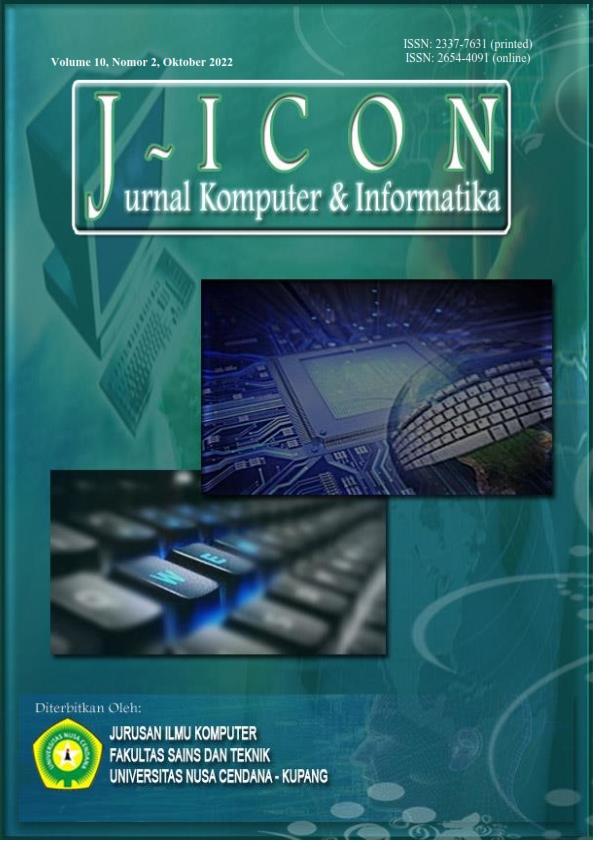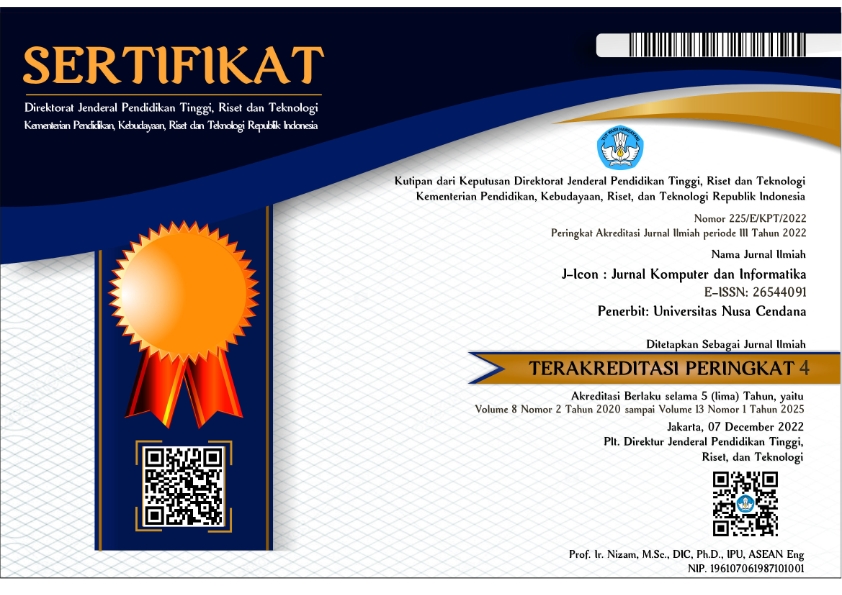ANALYSIS OF BASIC REPRODUCTIVE ESTIMATIONS MATHEMATICS MODEL OF THE SPREAD OF TUBERCULOSIS IN BIMA, INDONESIA
Abstract
The spread of covid-19 poses a threat to the transmission of diseases related to the lungs, including TB. TB is one of the main problems that is still easily found in various areas, including Bima Regency, NTB. To find out the dynamics of the distribution and the strategy to solve it, it is necessary to conduct research from various aspects, including the mathematical aspect. One of the important indicators in mathematical epidemiology is the basic reproduction ratio. Therefore, this study was conducted to determine the estimated value of the basic reproduction number, and the relationship between the rate of cure of the disease and the basic reproduction value using a mathematical model for the dynamics of the spread of TB tuberculosis in Bima Regency. The method used in this study is the early-take off-rate method, which is estimating the initial growth of the infected population. Bima Regency is included in the TB disease emergency category because from January 2020 to May 2022, 1,245 new cases of infected people were found, and the occurrence of the covid-19 pandemic in the last two years has contributed to a decrease in TB disease cases in Bima Regency. Based on the results of research data analysis, the spread of TB disease in Bima Regency is included in the endemic category with the indicator value of being in the range between 2 and 3. The spread of TB disease in Bima Regency will disappear from the population if the value of the disease transmission rate is below 0.168 with the healing rate is greater (or the treatment period is shorter).
Downloads
References
“‘Tuberklosis (TBC), Kenali Gejala, Penyebab dan Cara Penularan.’ https://www.mitrakeluarga.com/ artikel/artikel- kesehatan/tuberkulosis (accessed July 20220),” p. 20220.
“Tahun ini, Kemenkes Rencanakan Skrining TBC Besar- besaran.” https://sehatnegeriku.kemkes.go.id/baca/rilis-media/20220322/4239560.
“Kasus Terinfeksi TBC Tahun 2020-2022.” Data Dinas Kesehatan Kabupaten Bima, Tahun 2022.”
A. Alfan, F. Resmi, and N. A. . Dewi, “Basic Reproduction Number Of Tuberculosis spread Model in Lamongan With DOTS strategy,” J. Teor. dan Apl. si Mat., vol. 5, no. 1, p. 31764, 2021.
F. Sulayman, F. A. . Abdullah, and M. H. Mohd, “An SVEIRE Model of Tuberculosis to Assess the Effect of an Imperfect Vaccine and Other Exogenous Factors,” J. Math., vol. 9, no. 4, p. 9040327, 2021.
A. Puspitasari, Kamiran, and N. Asiyah, “Analisis Kestabilan dan Kontrol Optimal Model Penyebaran Tuberklosis (TB) dengan terapi dan Vaksinisasi Menggunakan Metode Runge Kutta,” J. Sains dan Seni ITS, vol. 8, no. 2, p. 23373520, 2019.
R. Syam, S. Syafruddin, and C. S. Said, “Model SEIRS Penyebaran Penyakit Tuberkulosis di Kota Makasar,” JMathCos, vol. 3, no. 1, p. 35580, 2022.
H. L. Saputra, Sutimin, and Sutrisno, “Analisis Kestabilan Model Penyebaran Penyakit Tuberkulosis dengan laju infeksi Tersaturasi,” J. Mat. Thales, vol. 2, no. 1, p. 51490, 2020.
M. Z. Ndii, “Pemodelan Matematika Dinamika Populasi dan Penyebaran Penyakit: Teori, Aplikasi dan Numerik,” Deepublish, p. 68, 2018.
G. Chowell and E. Al, “Estimation of the reproduction number of dengue fever from spatial epidemic data,” Math. Biosci., vol. 208, no. 2, pp. 571–589, 2007.
R. Hurint, M. Lobo, and M. Z. Ndii, “Analisis Sensitivitas Model Epidemi SEIR,” Natural Science:,” J. Sci. Technol., vol. 6, no. 1, p. 206131, 2017.
Jafaruddin, S. . Indratno, N. Nuraini, A. K. Supriatna, and E. Soewono, “Estimation of the Basic Reproductive Ratio For Dengue Fever at The Take-Off Period of Dengue Infection,” Comput.Math.Methods, vol. 151, p. 206131, 2015.
Ariyanto, G. L. Putra, and M. Z. Ndii, ““Estimation Of The Basic Reproductive Number Of The Distribution Of Dengue Fever In The City Of Bima,” J. Komput. dan Inform., vol. 9, no. 2, pp. 171–181, 2021.
E. M. Banni, M. A. Kleden, M. Lobo, and M. Z. Ndii, “”Estimasi Reproduction Number Model Matematika Penyebaran Malaria di Sumba Tengah,Indonesia,” JJBM, vol. 2, no. 1, pp. 13–19, 2021.
A. K. Supriatna, “Estimating the basic reproduction number of dengue transmission during 2002-2007 outbreaks in Bandung, Indonesia,” vol. 2, pp. 1–8, 2009.
M. Z. Ndii, N. Anggrini, J. Messakh, and B. S. Djahi, “Estimating the reproduction number and designing the integrated strategies against dengue,” Results Phys, vol. 27, no. 2, p. 104473, 2021.
A. Faruk, “Model Epidemik Tuberkulosis SEIR Dengan Terapi Pada Individu Terinfeksi,” JPS, vol. 18, no. 3, pp. 390–392, 2016.
Copyright (c) 2022 Ariyanto Ariyanto, Rapmaida M Pangaribuan, Zakarias S Ngara, Keristina Br Ginting

This work is licensed under a Creative Commons Attribution 4.0 International License.
The author submitting the manuscript must understand and agree that if accepted for publication, authors retain copyright and grant the journal right of first publication with the work simultaneously licensed under a Creative Commons Attribution (CC-BY) 4.0 License that allows others to share the work with an acknowledgment of the work’s authorship and initial publication in this journal.
 Ariyanto Ariyanto(1*)
Ariyanto Ariyanto(1*)




